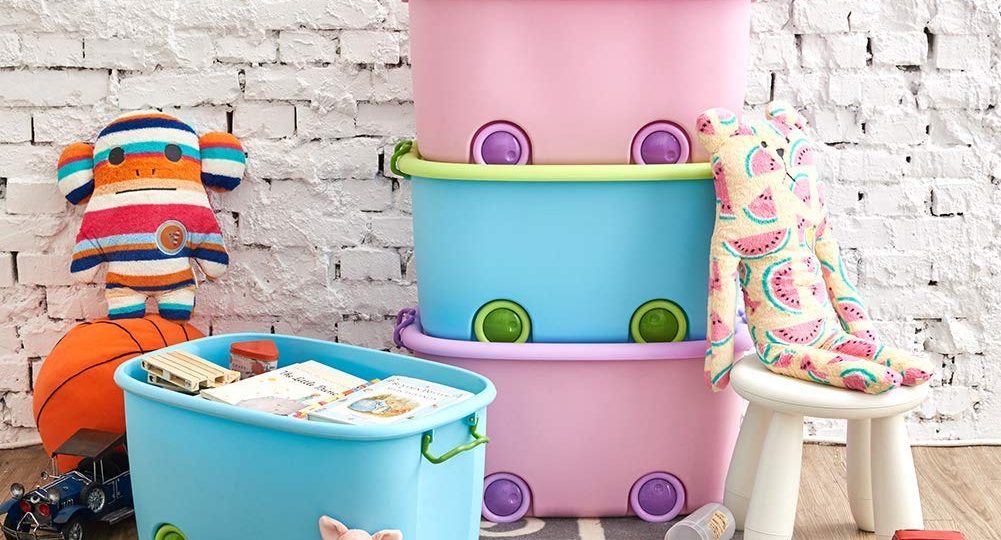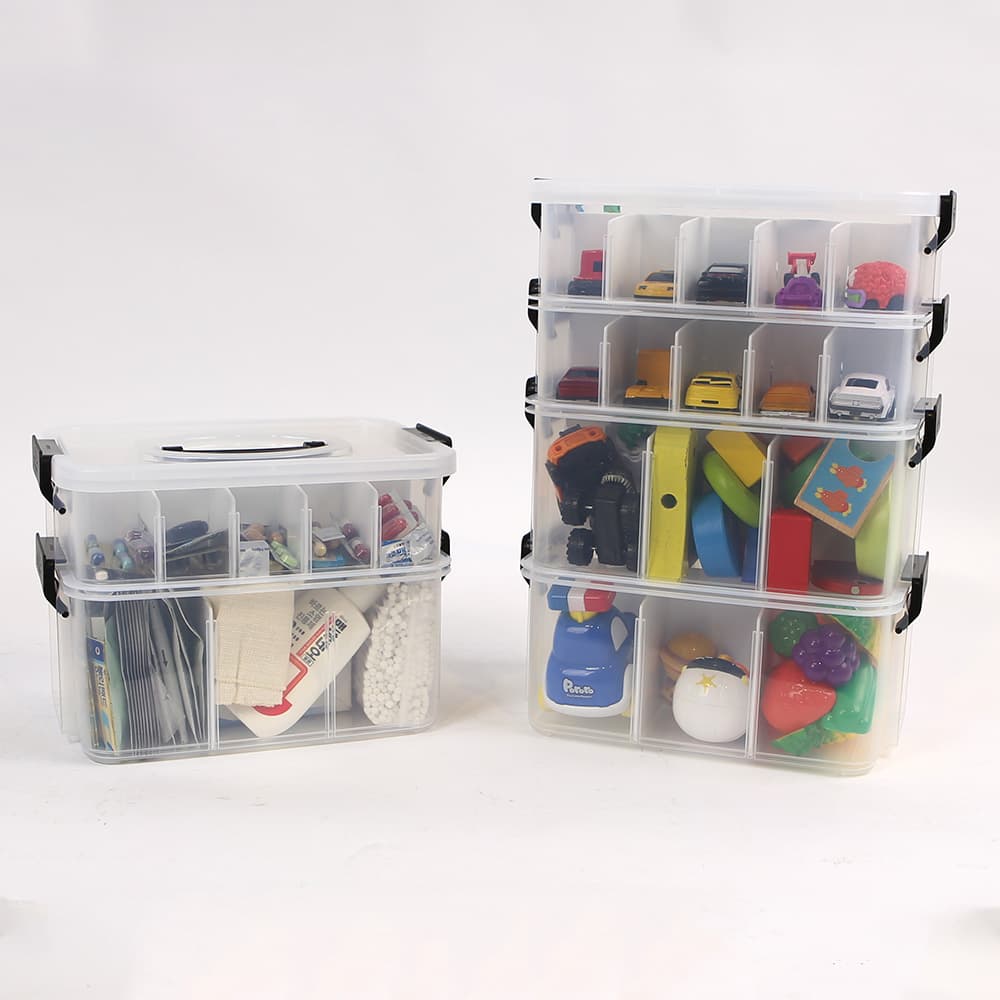
Maximize Game Space: Toy Storage Stacking Boxes
Importance of Organized Toy Storage
Keeping toys organized can be a game-changer in any home with kids. It not only helps maintain a tidy space, but also ensures that toys are easily accessible when playtime comes. Well-organized toy storage can prevent the loss of toy pieces and minimize clutter, which in turn can reduce stress for both parents and children. Moreover, an orderly environment is beneficial for children’s development. It teaches them responsibility as they learn to put toys back in their designated spots. Using toy storage stacking boxes is a strategic approach to achieving this order.
These boxes can transform a chaotic jumble of toys into a neatly arranged collection. This type of storage is particularly useful in small spaces where maximizing vertical space is necessary. By stacking boxes, you can create more floor space for playtime and activities. Lastly, organized toy storage can prolong the life of toys by protecting them from damage, and make cleaning up after play quicker and more efficient. In essence, embracing organized toy storage is a step toward a more harmonious home environment.
Types of Stackable Toy Storage Solutions
Selecting the ideal toy storage stacking boxes involves considering various types that cater to different needs and preferences. Enhancing the functionality and organization of your play area can be easily achieved with the right stackable storage solutions.
Toy Storage Boxes
Toy storage boxes are a classic choice for keeping toys in check. They come in various sizes and can often fit into existing furniture like bookshelves or under beds. Many have lids to keep dust away and are stackable, allowing vertical space to be used efficiently. The ease of use and straightforward design make toy storage boxes a favorite for parents aiming for a quick clean-up solution.
Toy Storage Bins
Toy storage bins are similar to boxes, but are usually open-topped and sometimes equipped with handles. These bins are perfect for accessing frequently used toys and make it easy for children to see what’s inside. They can be stacked on top of each other or placed on shelves, making them a versatile option for any play area or bedroom.
Customizable Shelving Units
For those seeking a more permanent solution, customizable shelving units offer a tailored approach to toy organization. These units can integrate stackable cubes or shelves, which can be rearranged according to the child’s growth and toy collection. They allow parents to make the most of the space they have, while also adapting to their child’s changing needs.
Materials Used in Stackable Toy Storage
Selecting the right materials for your toy storage stacking boxes is crucial. Not only do they impact the durability and aesthetic of your storage solution, but they also affect safety and accessibility. Let’s explore the materials that are commonly used in stackable toy storage options.
Plastic Stacking Containers
Plastic stacking containers are a versatile and affordable choice for toy storage. They are lightweight, making them easy to move around even for children. Plastic containers often come in a variety of colors which can add a vibrant touch to any room. They are easy to clean too – a simple wipe down with a damp cloth can keep them looking fresh. Besides, most plastic containers are designed with interlocking features, ensuring a secure stack that won’t easily topple over.
Wooden Stacking Boxes
Wooden stacking boxes offer a sturdier option for those who prefer natural materials. They bring a classic, warm look to any space and can be painted or decorated to match room decor. Wooden boxes are generally more durable than plastic, but they can be heavier and might not be suitable for very young children. They require more maintenance to keep them in good condition but can last for many years with proper care.
Fabric Storage Cubes
Fabric storage cubes present a softer alternative to plastic and wood. They are often used within shelving units, providing a gentle way to store toys that might be damaged by harder materials. Fabric cubes can collapse for easy storage when not in use and come in an array of designs and colors. They are not as easy to clean as plastic but can often be machine washed if the fabric is removable. These are great for creating a cozy look while keeping toys tidy and accessible.
Considerations for Choosing Stackable Toy Storage
Choosing the right stackable toy storage requires careful thought. Here are key factors to keep in mind.
Space Constraints
Before picking toy storage stacking boxes, consider the room’s size. Measure the space to ensure a good fit. Think vertical to save floor space. Look for units that maximize available height. It’s about finding a balance – enough boxes for toys, but room left for play.
Durability and Safety
Toy storage should last and be safe. Opt for sturdy materials that can withstand rough use. Ensure corners are rounded for child safety. Avoid flimsy boxes; they can topple and break. Check for certifications that guarantee safety standards.
Accessibility for Children
Children need to reach their toys easily. Choose storage that’s not too high for them. Pick boxes with easy-open lids or no lids at all. See that they can safely stack and unstack the boxes themselves. It encourages independence and keeps playtime frustration-free.
Innovative Design Features of Stackable Storage
Stackable toy storage options come with innovative features that enhance functionality and save space.
Interlocking Designs
Interlocking designs in stackable toy storage boxes provide stability and safety. These features prevent the stacked units from sliding or falling, giving parents peace of mind. Kids can grab their toys without risk of the boxes toppling over.
Collapsible Options
Collapsible stackable storage solutions offer great versatility. When not in use, they fold down flat. This feature makes it easy to store the containers themselves, saving valuable space.
Built-in Labels and Dividers
Some toy storage stacking boxes come with built-in labels and dividers. These help children and parents to sort and find toys quickly. Labels can be customized, and dividers arranged, to suit different toy categories or sizes.
Organizational Strategies Using Stackable Storage
Proper organization enhances the usability of toy storage stacking boxes. Let’s look at a few strategies.
Categorizing Toys
Start by grouping toys by type, size, or frequency of use. Use different toy storage stacking boxes for each category. This aids in quick selection and tidying up. Labels on boxes simplify this process, as children recognize where things belong.
- Type: Separate building blocks, dolls, or art supplies each into distinct boxes.
- Size: Large toys in one box, small toys in another.
- Use: Frequently played with items in easy-to-reach bins.
Encourage kids to participate in this categorization. It fosters their decision-making and organizational skills.
Rotation of Toys
To keep interest alive, rotate toys periodically. Reserve some toy storage stacking boxes for items not currently in use. Swap contents monthly or seasonally to renew excitement.
- Seasonal Rotation: Bring out outdoor toys in summer, indoor games during winter.
- Monthly Change: Exchange a box of toys with another from storage every month.
Rotating toys also lengthens their lifespan and keeps the play space uncluttered. By implementing these smart strategies, the benefits of stackable storage units truly come to light.
Maintenance and Care for Stackable Toy Storage
To keep your toy storage stacking boxes in top shape, here are some simple maintenance and care tips:
- Regular Cleaning: Wipe down plastic and wooden boxes with a damp cloth. For tougher stains, use a mild detergent.
- Inspect Regularly: Check for any damage or wear and tear. Repair or replace boxes as needed to ensure safety.
- Avoid Overloading: Do not fill boxes too heavily. This can cause boxes, especially fabric ones, to lose shape or break.
- Protect from Elements: Keep wooden and fabric storage away from excessive moisture to prevent mold and warping.
- Follow Manufacturer Instructions: Each type of box may have specific care instructions. Always follow them for best results.
By following these straightforward care strategies, you can extend the life of your toy storage stacking boxes and maintain a safe, tidy play area for your children.


